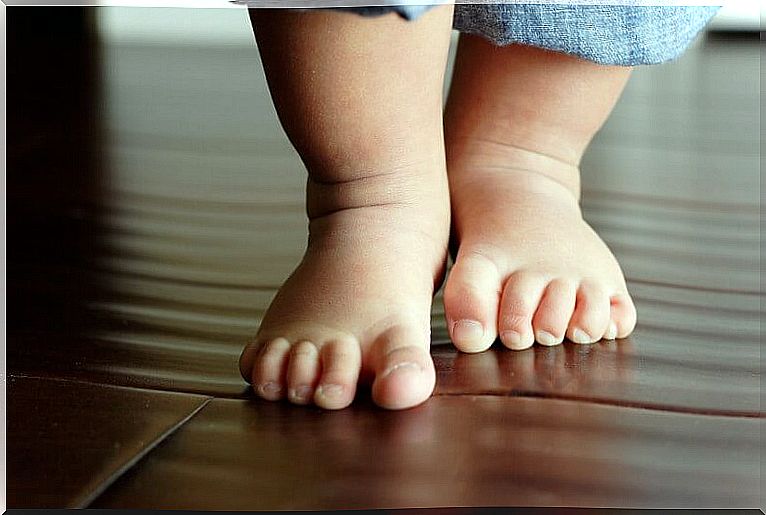The Fracture Of The First Steps

Fracturing the first steps can become common in children who are learning to walk. Although it is not very serious, it can have both physical and mental consequences for children. We tell you everything you need to know about this type of fracture.
What is First Steps Fracture?
The first steps fracture is also known as a Toddler fracture or occult fracture. What happens is that, when the child begins to take his first steps, there are many falls and blows, even if they are of little impact, that he suffers. The leg bones are not yet strong enough and are not used to bearing weight yet.
For this reason, on some occasions, the Toddler fracture occurs. This is a fracture of the tibia, a bone in the leg. In this case, it is an undisplaced fracture, which means that the bone breaks but does not move from its original place.
Obviously, due to its name, this type of fracture usually affects children between 9 months and 3 years, that is, children of age to learn to walk.

What symptoms does it produce?
Due to the ages at which it occurs, children still do not know how to express exactly what is happening to them or what is hurting them. For this reason, the most common symptom is the refusal to walk.
They notice that it is when they walk that it causes pain, so they avoid supporting the foot in every way possible. There may be localized pain when touching the lower leg, near the ankle.
The child may also have a limp to avoid supporting the injured leg and pain. This limp appears suddenly. We must bear in mind that many times we do not even remember that the child has suffered a blow or a fall, so sometimes it is difficult to realize what is happening.
How is a first step fracture diagnosed?
The diagnosis will be made by the specialist. This will be based on the symptoms that the child presents, how the process has occurred and a good physical examination. In addition to this, complementary imaging tests will be necessary. An ultrasound may be done, but the test that will give the doctor the most information, in this case, will be the x-ray of the child’s leg.
What is your treatment?
Once the X-ray is done and the diagnosis is established, the child will be placed in a leg splint that allows immobilization. After 10 days, another x-ray will be repeated. If it was really a Toddler fracture, the X-ray performed on the child at 10 days will show what we know as a bone callus in the area of the fracture.
This image is a sign that the fracture is being repaired. Therefore, once it has been confirmed that it is this type of fracture and that it is being repaired, the immobilization splint will be kept for two more weeks.

As for the fracture of the first steps, you should know …
Due to the normal growth and development of the child, this fracture is common. However, taking into account the possible symptoms that may appear, and going quickly to the specialist, its treatment is simple. Normally, these fractures heal well and the child will not have physical sequelae after bone solidification.
However, we must bear in mind that there are not only physical consequences. In these cases, young children are not capable of reasoning like an adult. It is possible that, after suffering this fracture, some of them become afraid to continue learning to walk.
In these cases, patience is very important. We will have to explain to them, as far as possible, what is happening and support them, always trying to make them part of the reasoning to walk again and without forcing them to do so in any case.










